Your cart is currently empty!
Tag: Verification

Adult websites leave SC as age verification law takes effect | Palmetto Politics
COLUMBIA — Multiple adult entertainment websites have begun restricting access to users in South Carolina now that an age-verification law is officially on the books.
The law sponsored by state Rep. Travis Moore, R-Spartanburg, went into effect Jan. 1. The 2024 Child Online Safety Act was designed to restrict minors’ access to pornographic content online by requiring purveyors of adult entertainment to use “commercially reasonable” methods of using public or private transactional data to verify users’ ages.
“I don’t think it’s disputed that the law itself is reducing the number of minors who are having access to this content, period,” Moore said in an interview. “I mean, any reduction is moving in the right direction.”
The bill is a nearly identical copy of Louisiana’s Act 440, a bill sponsored by Christian family counselor and conservative state Rep. Laurie Schlegel in 2022 that has since become a template for 17 similar state anti-obscenity laws passed primarily across the South.
Methods for verifying ages include everything from so-called “digitized identification cards” to independent, third-party age-verification services used by businesses or government agencies to verify users were above the age of 18. Any website that fails to vet the ages of users who were eventually able to access adult content could be found criminally liable and sued for damages, per the S.C. law.
The bill easily passed through the Legislature. In the House, only Rep. Justin Bamberg, D-Bamberg, voted against the bill in a 113-1 vote, while the legislation passed unanimously in the Senate. But it was not without concerns.
During testimony on the bill last winter, multiple online advocacy organizations warned lawmakers such age verification policies could present significant privacy concerns for South Carolina consumers and potentially violate federal protections for anonymous speech on the internet. Others, including members of the state Senate staff, suggested the legislation could potentially fail to pass constitutional muster under the First Amendment of the U.S. Constitution. Ultimately, lawmakers decided that didn’t matter.
“Sometimes you have to make a policy position,” Sen. Sean Bennett, R-Summerville, said at the time. “One that says our children are important, that our people are important.”
Exodus of porn sites from South Carolina
The result of that policy decision has ultimately been a mass exodus of major pornographic websites from South Carolina. While some websites, like the Cypress-based Hammy Media Ltd.-owned xHamster, have begun collecting South Carolina users’ personal information to access the site, others — like sites owned by adult entertainment conglomerate Aylo — have begun restricting access to South Carolina-based IP addresses entirely, citing their concerns with the liability of managing reams of sensitive user data.
While they do not oppose age verification, Aylo representatives said in a statement, the onus should not be on individual websites but via age-restriction software on the actual devices used to access adult-related content.
“Unfortunately, the way many jurisdictions worldwide have chosen to implement age verification is ineffective, haphazard, and dangerous,” representatives for Aylo said in a statement to The Post and Courier. “Any regulations that require hundreds of thousands of adult sites to collect significant amounts of highly sensitive personal information is putting user safety in jeopardy. Moreover, as experience has demonstrated, unless properly enforced, users will simply access non-compliant sites or find other methods of evading these laws.”
Some believe that is already happening.
Bamberg told The Post and Courier that he believed South Carolina’s law to be unenforceable and potentially damaging to adult entertainment sites that actually try to moderate their content.
The Aylo-owned site Pornhub implemented major reforms to its rules after allegations it was hosting illegal content on its site in 2020. The company claims its traffic in Louisiana dropped roughly 80 percent after the implementation of that state’s law. But not because people stopped looking for porn, they argued. Instead, users simply migrated to darker corners of the internet that don’t ask users to verify age, don’t follow the law and don’t moderate the content they publish on their sites.
Even though Louisiana implemented a digital ID card called LA Wallet that was ultimately used on Aylo-owned sites, the company said it did little to stem the exodus of traffic. Traffic which, they hypothesized, then went to more unscrupulous sites.
“In practice, the laws have just made the internet more dangerous for adults and children,” they said in a statement.
In the days since the law took effect, that appears to be coming true in South Carolina. Other popular adult entertainment websites checked by The Post and Courier on Jan. 2 appear to have no forms of content moderation in place at all, while the state’s ability to prosecute internet-related crime is already somewhat limited due to the sheer scope of cyberspace. Instead, Bamberg said, it should be on parents to ensure their children are not accessing content they shouldn’t be.
“There’s nothing that the attorney general’s office or anybody’s gonna be able to do about it because it’s the internet,” he said. “It’s borderline impossible to police the internet.”
Moore acknowledged the potential for some of the adverse effects described by critics, including the possibility of users pursuing other means, like virtual private networks, to circumvent geographically-based blocks by pornography companies. But he also argued the burden on companies was relatively small, and that lawmakers have already expressed interest in legislation — like a 2023 “Default to Safety” Act proposed in both the House and the Senate — that would have put the burden for age verification directly on the makers of mobile devices.
“It’s like any other type of law you pass for any other type of issue like this,” he said. “People are going to find ways around it. But if the overall goal is to to reduce the overall access, I think it’s definitely having that effect.”
Courts to decide if laws are legal
The legality of South Carolina’s law is still an open question. A series of lower courts have upheld the legality of numerous states’ laws, including the one in Louisiana. The U.S. Supreme Court on Jan. 15 is set to hear arguments in a legal challenge to an identical bill enacted in Texas on the grounds that while states may “rationally restrict minors’ access to sexual materials,” those restrictions must withstand strict levels of scrutiny if they are found to limit adults’ access to constitutionally protected speech.
The issue at the center of the debate is not simply whether age verification itself is unconstitutional, but whether sex and obscenity are inherently intertwined.
Decades of legal precedent have already determined that is not the case. And by implementing age-verification requirements for sexual content, states like Texas are effectively seeking to restrict adults’ ability to access constitutionally protected forms of expression, attorneys for the American Civil Liberties Union wrote in a petition to the court.
Supporters of the laws, however, say such legislation is the surest way to ensure young children cannot access obscene materials at a time where it is arguably easier than ever.
Adult websites operating in South Carolina are scrambling to comply with a new age verification law that has recently taken effect. The law, which requires all users accessing adult content online to verify their age through a secure process, has forced several major adult websites to pull out of the state altogether.The move comes as a blow to South Carolina residents who rely on these websites for their adult entertainment needs. Many users have expressed frustration at the sudden disappearance of their favorite sites, with some even resorting to using VPNs to access them from out-of-state locations.
Industry experts warn that the new law could have far-reaching consequences for the adult entertainment industry in South Carolina, potentially leading to job losses and decreased revenue for businesses that rely on online adult content.
Despite the challenges, some adult websites have vowed to work with lawmakers to find a solution that allows them to operate legally in the state. In the meantime, users are advised to familiarize themselves with the new age verification requirements and seek alternative sources for their adult entertainment needs.
Tags:
- Adult websites
- Age verification law
- South Carolina
- Palmetto Politics
- Online age verification
- Adult content regulations
- Internet safety laws
- Age-restricted websites
- SC age verification
- Adult entertainment industry
#Adult #websites #leave #age #verification #law #takes #effect #Palmetto #Politics

Behind the Label: The Rigorous Process of Non-GMO Project Verification
In recent years, there has been a growing concern among consumers about the use of genetically modified organisms (GMOs) in food products. As a result, more and more people are seeking out non-GMO options when shopping for groceries. One way that consumers can identify non-GMO products is by looking for the Non-GMO Project Verified label on packaging.But what does it take for a product to earn this coveted label? The process of Non-GMO Project verification is rigorous and thorough, involving multiple steps to ensure that a product meets the organization’s stringent standards.
The first step in the verification process is for a company to submit an application to the Non-GMO Project. This application includes detailed information about the product, its ingredients, and the manufacturing process. The Non-GMO Project then reviews this information to determine if the product is eligible for verification.
If the product passes this initial review, the next step is for the company to provide documentation to prove that all ingredients in the product are non-GMO. This documentation can include certificates from suppliers, test results, and other relevant information. The Non-GMO Project carefully reviews this documentation to confirm that the product meets its standards.
Once the product’s ingredients have been verified as non-GMO, the next step is for the product to undergo testing. Samples of the product are sent to a third-party laboratory for analysis to ensure that they do not contain any GMOs. The results of these tests are then reviewed by the Non-GMO Project to confirm that the product is indeed non-GMO.
In addition to ingredient verification and testing, the Non-GMO Project also requires companies to have robust traceability and segregation systems in place to prevent contamination with GMOs. This includes conducting regular audits of suppliers and manufacturing facilities to ensure that proper procedures are being followed.
After completing all of these steps, a product that meets the Non-GMO Project’s standards is awarded the Non-GMO Project Verified label. This label provides consumers with peace of mind that the product they are purchasing is free from genetically modified ingredients.
Overall, the process of Non-GMO Project verification is a complex and time-consuming endeavor, but it is essential for ensuring the integrity of non-GMO products. By choosing products with the Non-GMO Project Verified label, consumers can be confident that they are making a healthier and more sustainable choice for themselves and the environment.
#Label #Rigorous #Process #NonGMO #Project #Verification,non-gmo project verified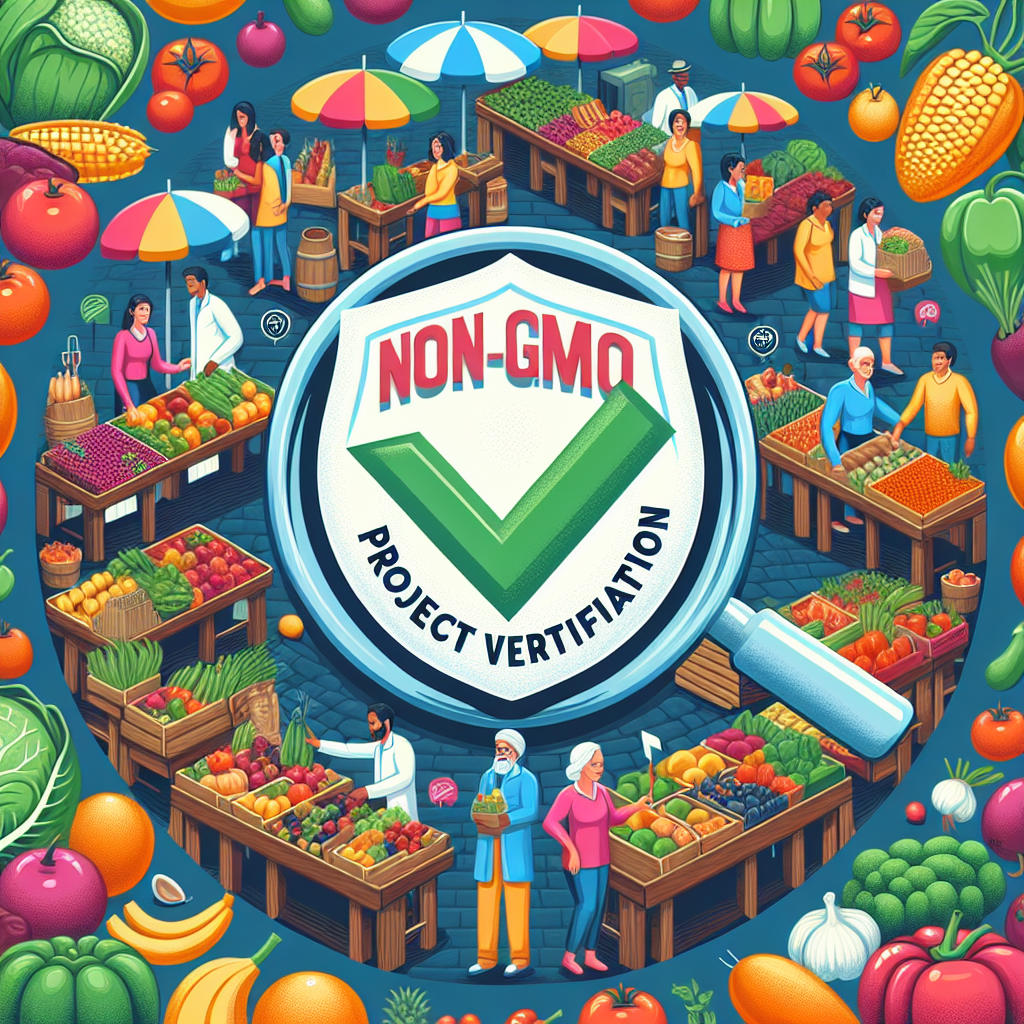
Why Non-GMO Project Verification Matters in Today’s Food Market
In today’s food market, consumers are becoming more conscious about the ingredients in the products they purchase. One of the key concerns for many individuals is the presence of genetically modified organisms (GMOs) in their food. As a result, the Non-GMO Project Verification has become increasingly important for both consumers and food manufacturers.The Non-GMO Project is a non-profit organization that offers third-party verification and labeling for non-GMO food and products. The verification process involves rigorous testing and evaluation of ingredients to ensure they meet the organization’s strict standards for GMO avoidance. Products that receive the Non-GMO Project Verification seal can assure consumers that they are free of genetically modified ingredients.
So, why does Non-GMO Project Verification matter in today’s food market? Here are a few reasons:
1. Consumer Demand: As awareness about GMOs and their potential health and environmental risks grows, consumers are actively seeking out non-GMO products. By obtaining Non-GMO Project Verification, food manufacturers can meet the demands of consumers who are looking for transparency and reassurance about the ingredients in their food.
2. Health and Safety: There is ongoing debate about the long-term effects of GMOs on human health. While some studies have shown no adverse effects, others suggest potential risks such as allergic reactions and antibiotic resistance. Non-GMO Project Verification allows consumers to make informed choices about the food they eat, promoting health and safety.
3. Environmental Concerns: GMO crops are often engineered to be resistant to pests and herbicides, leading to increased pesticide use and potential harm to the environment. By choosing non-GMO products, consumers can support sustainable agriculture practices and reduce their impact on the environment.
4. Labeling Laws: In the United States, there are currently no federal regulations requiring the labeling of GMO ingredients. This lack of transparency has led to consumer confusion and calls for clearer labeling standards. Non-GMO Project Verification provides a reliable way for consumers to identify and choose non-GMO products.
In conclusion, Non-GMO Project Verification is a valuable tool for consumers who want to make informed choices about the food they eat. By choosing products with the Non-GMO Project Verification seal, consumers can support their health, the environment, and sustainable agriculture practices. Food manufacturers that obtain Non-GMO Project Verification can meet consumer demand for transparency and provide assurance that their products are free of genetically modified ingredients. In today’s food market, Non-GMO Project Verification matters more than ever.
#NonGMO #Project #Verification #Matters #Todays #Food #Market,non-gmo project verified
The Science Behind Non-GMO Project Verification: Ensuring a GMO-Free Future
As the debate over genetically modified organisms (GMOs) continues to rage on, many consumers are turning to products that are labeled as non-GMO. But what does it mean for a product to be non-GMO, and how can consumers be sure that the products they are purchasing are truly GMO-free? One way to ensure the authenticity of non-GMO products is through the Non-GMO Project verification process.The Non-GMO Project is a non-profit organization that was founded in 2007 with the goal of providing consumers with a trusted third-party verification for non-GMO products. The organization’s verification process is rigorous and thorough, requiring companies to submit detailed documentation about their ingredients and production processes in order to be certified as non-GMO.
The science behind the Non-GMO Project verification process is complex and multi-faceted. One of the key aspects of the verification process is the testing of ingredients for the presence of GMOs. This testing is done using a variety of techniques, including polymerase chain reaction (PCR) testing, which allows scientists to detect the presence of GMOs in a sample with a high degree of accuracy.
In addition to testing for the presence of GMOs, the Non-GMO Project also requires companies to provide detailed information about their ingredient sourcing and production practices. This information is used to verify that the ingredients used in a product are not derived from genetically modified sources and that the product has not come into contact with GMOs at any point during the production process.
The Non-GMO Project verification process also includes on-site inspections of facilities to ensure that companies are following proper procedures to prevent contamination with GMOs. This includes ensuring that equipment is properly cleaned and maintained, and that ingredients are stored in a way that prevents cross-contamination.
By following the rigorous standards set forth by the Non-GMO Project, companies can earn the organization’s seal of approval, which allows them to label their products as non-GMO. This seal is a valuable tool for consumers who are looking to avoid GMOs in their food and other products, as it provides a trusted and reliable way to verify the authenticity of non-GMO claims.
In a world where GMOs are becoming increasingly prevalent in our food supply, the Non-GMO Project verification process offers consumers a way to make informed choices about the products they purchase. By choosing products that are certified as non-GMO by the Non-GMO Project, consumers can support companies that are committed to providing GMO-free options and help to create a future where GMOs are no longer a dominant part of our food system.
#Science #NonGMO #Project #Verification #Ensuring #GMOFree #Future,non-gmo project verified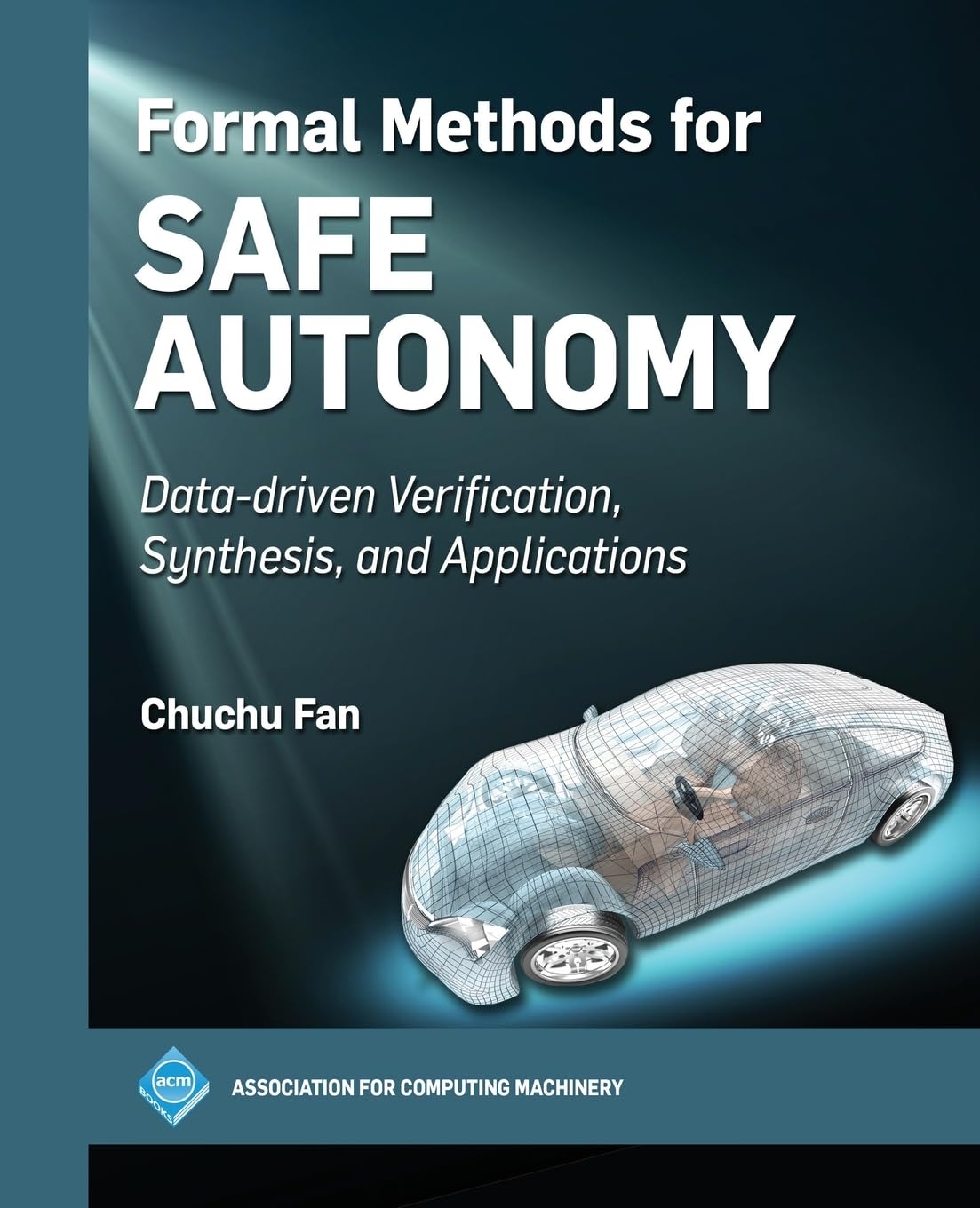
Formal Methods for Safe Autonomy: Data-Driven Verification, Synthesis, and Applications (ACM Books)
Price: $54.95
(as of Dec 27,2024 12:51:16 UTC – Details)
ASIN : B0DKB2NZFS
Publisher : ACM Books (October 7, 2024)
Language : English
Paperback : 184 pages
ISBN-13 : 979-8400708633
Item Weight : 11.5 ounces
Dimensions : 7.5 x 0.39 x 9.25 inches
Formal Methods for Safe Autonomy: Data-Driven Verification, Synthesis, and Applications (ACM Books)In the rapidly evolving field of autonomous systems, ensuring safety and reliability is of paramount importance. Formal methods, which provide mathematical techniques for rigorously verifying and synthesizing correct behaviors, are essential tools for achieving this goal.
This book, published by the Association for Computing Machinery (ACM), explores the latest advances in formal methods for safe autonomy, with a focus on data-driven approaches. The authors present cutting-edge research on verification and synthesis techniques that leverage data to improve the reliability and robustness of autonomous systems.
Topics covered in the book include:
– Formal verification of autonomous systems using data-driven techniques
– Synthesis of controllers for autonomous systems based on data-driven models
– Applications of formal methods in diverse domains, such as robotics, self-driving cars, and unmanned aerial vehicles
– Case studies and real-world examples illustrating the benefits of data-driven formal methods for safe autonomyWhether you are a researcher, practitioner, or student in the field of autonomous systems, this book provides valuable insights into the use of formal methods for ensuring the safety and reliability of autonomous systems. Stay ahead of the curve with the latest research and applications in data-driven verification, synthesis, and more.
#Formal #Methods #Safe #Autonomy #DataDriven #Verification #Synthesis #Applications #ACM #Books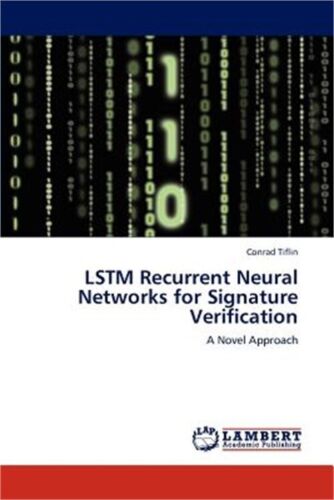
LSTM Recurrent Neural Networks for Signature Verification (Paperback or Softback

LSTM Recurrent Neural Networks for Signature Verification (Paperback or Softback
Price :70.28– 58.57
Ends on : N/A
View on eBay
LSTM Recurrent Neural Networks for Signature Verification (Paperback)In this comprehensive guide, readers will learn about the cutting-edge technology of LSTM recurrent neural networks and how they can be applied to the field of signature verification.
With the rise of digital signatures and the need for secure authentication methods, signature verification has become a crucial area of research. LSTM recurrent neural networks offer a powerful tool for analyzing and recognizing patterns in sequential data, making them ideal for use in signature verification systems.
This book covers the fundamentals of LSTM networks, the basics of signature verification, and provides step-by-step instructions for implementing an LSTM-based signature verification system. Readers will also learn about the latest research and advancements in the field, as well as practical applications and case studies.
Whether you are a student, researcher, or industry professional looking to expand your knowledge in the field of signature verification, this book is a must-read. Get your copy in paperback today and stay ahead of the curve in this exciting and rapidly evolving field.
#LSTM #Recurrent #Neural #Networks #Signature #Verification #Paperback #Softback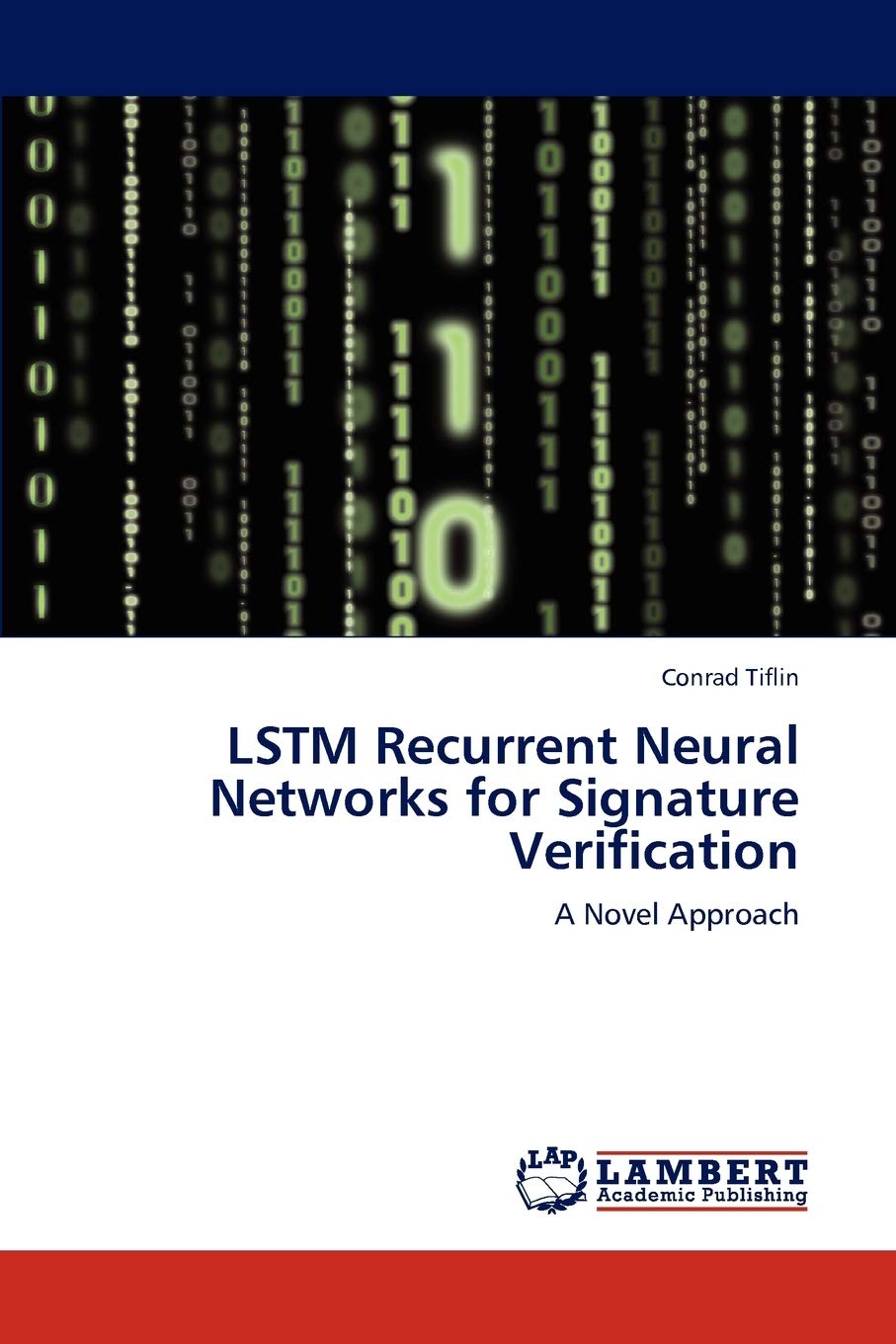
LSTM Recurrent Neural Networks for Signature Verification: A Novel Approach
Price: $64.00
(as of Dec 24,2024 20:44:21 UTC – Details)
ASIN : 3846589942
Publisher : LAP LAMBERT Academic Publishing (February 6, 2012)
Language : English
Paperback : 104 pages
ISBN-10 : 9783846589946
ISBN-13 : 978-3846589946
Item Weight : 5.8 ounces
Dimensions : 5.91 x 0.24 x 8.66 inches
In recent years, there has been a growing interest in using deep learning techniques for signature verification tasks. One popular approach is the use of Long Short-Term Memory (LSTM) recurrent neural networks, which have shown promising results in various sequence modeling tasks.In this post, we will discuss a novel approach to using LSTM recurrent neural networks for signature verification. Unlike traditional methods that rely on handcrafted features and heuristic rules, LSTM networks have the ability to learn complex patterns and dependencies from raw data, making them well-suited for signature verification tasks.
One key advantage of using LSTM networks for signature verification is their ability to capture long-term dependencies in sequential data. Signatures are inherently sequential in nature, with strokes and pen movements forming a unique pattern that can be difficult to model using traditional methods. LSTM networks excel at capturing these temporal dependencies, allowing them to effectively distinguish between genuine and forged signatures.
Another benefit of using LSTM networks is their ability to learn from limited data. Signature verification tasks often suffer from a lack of labeled training data, making it challenging to train accurate models. LSTM networks are able to generalize well to unseen data, allowing them to perform well even with small training sets.
In conclusion, LSTM recurrent neural networks offer a promising approach to signature verification tasks. Their ability to capture long-term dependencies, learn from limited data, and generalize well to unseen examples make them a powerful tool for verifying the authenticity of signatures. By leveraging the power of deep learning, researchers and practitioners can develop more accurate and reliable signature verification systems.
#LSTM #Recurrent #Neural #Networks #Signature #Verification #Approach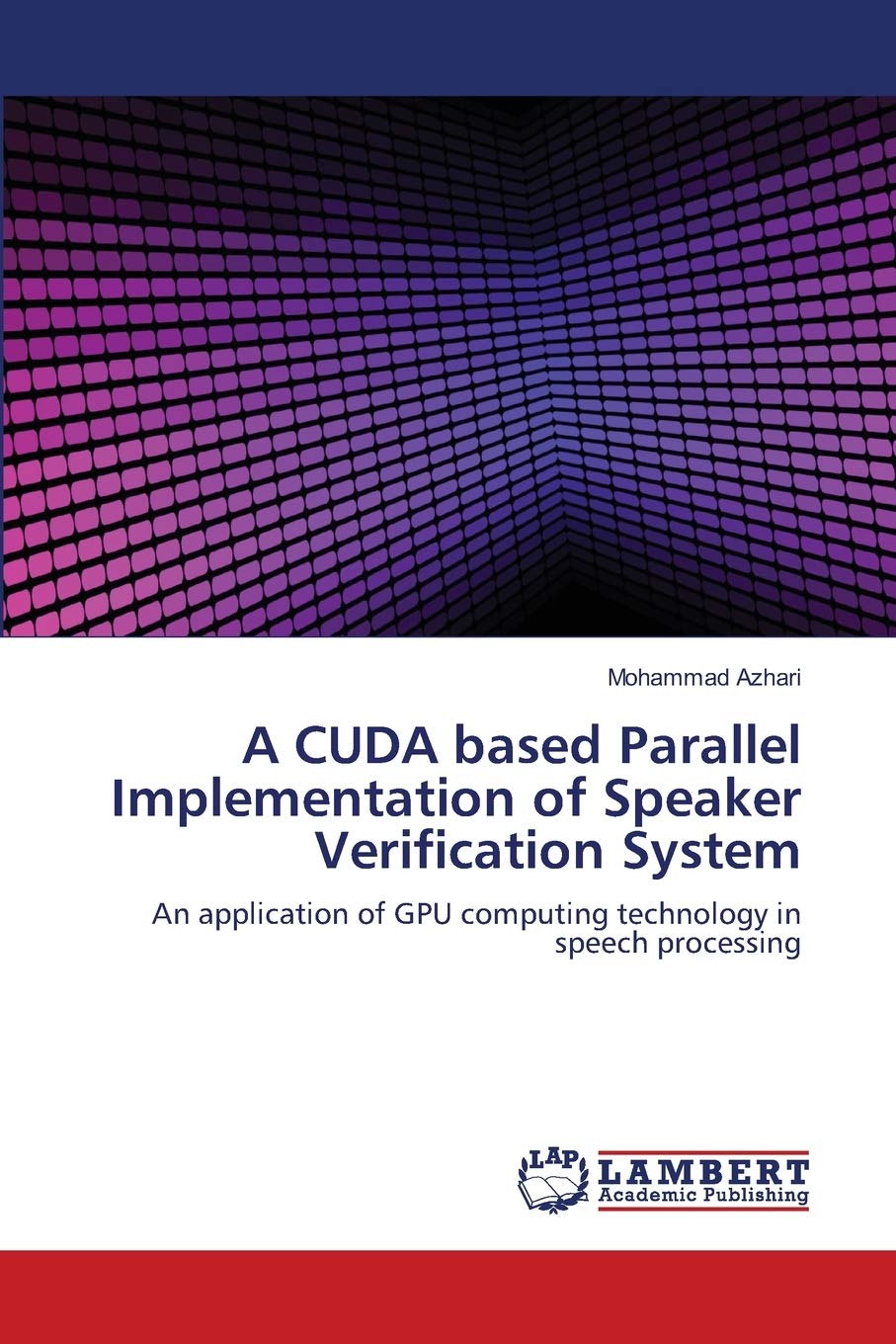
A CUDA based Parallel Implementation of Speaker Verification System: An application of GPU computing technology in speech processing
Price: $62.00
(as of Dec 17,2024 19:38:20 UTC – Details)
Publisher : LAP LAMBERT Academic Publishing (July 2, 2012)
Language : English
Paperback : 64 pages
ISBN-10 : 3659165875
ISBN-13 : 978-3659165870
Item Weight : 3.67 ounces
Dimensions : 5.91 x 0.15 x 8.66 inches
In recent years, there has been a growing interest in using GPU computing technology to accelerate various computational tasks, including speech processing. One of the key applications of this technology is in speaker verification systems, which are used to verify the identity of a person based on their voice.In this post, we will discuss a CUDA-based parallel implementation of a speaker verification system, which leverages the power of GPUs to significantly speed up the processing of voice data.
Traditional speaker verification systems typically rely on complex algorithms that analyze various features of the voice signal, such as pitch, formants, and spectral characteristics. These algorithms can be computationally intensive, especially when dealing with large datasets or real-time applications.
By using CUDA, a parallel computing platform developed by NVIDIA for GPUs, we can distribute the computational workload across multiple GPU cores, allowing for faster processing of voice data. This can significantly reduce the time required to verify a speaker’s identity, making the system more efficient and scalable.
Furthermore, CUDA-based parallel implementations can also take advantage of the massive parallelism offered by modern GPUs, which contain hundreds or even thousands of cores. This allows for the simultaneous processing of multiple voice samples, further improving the speed and accuracy of the speaker verification system.
Overall, the use of GPU computing technology in speech processing, particularly in speaker verification systems, offers significant benefits in terms of performance and scalability. By leveraging the power of GPUs through CUDA, we can develop faster and more efficient systems that are capable of processing large amounts of voice data in real-time.
#CUDA #based #Parallel #Implementation #Speaker #Verification #System #application #GPU #computing #technology #speech #processing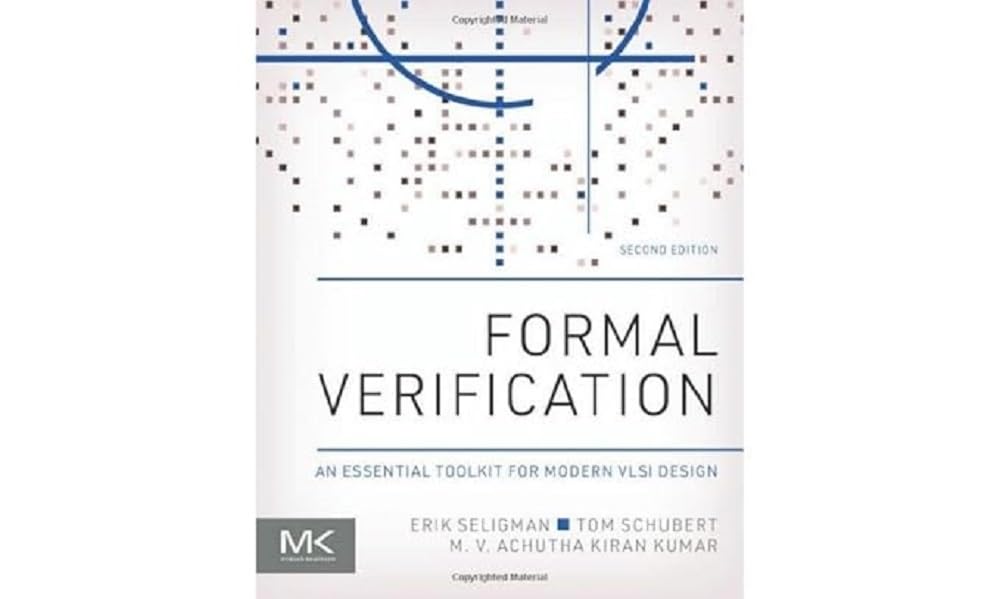
Formal Verification: An Essential Toolkit for Modern VLSI Design
Price:$115.00– $97.21
(as of Dec 17,2024 00:19:10 UTC – Details)
Publisher : Morgan Kaufmann; 2nd edition (June 9, 2023)
Language : English
Paperback : 424 pages
ISBN-10 : 0323956122
ISBN-13 : 978-0323956123
Item Weight : 2.31 pounds
Dimensions : 7.4 x 0.79 x 9.21 inches
Formal Verification: An Essential Toolkit for Modern VLSI DesignFormal verification is a crucial step in the design process of very large-scale integrated (VLSI) circuits. It involves mathematically proving that a design meets its specifications and requirements, without relying on simulation or testing.
In today’s complex and highly competitive VLSI design industry, ensuring the correctness and reliability of designs is more important than ever. Formal verification provides a systematic and rigorous approach to verifying the correctness of digital designs, helping to detect and eliminate potential bugs and errors early in the design process.
By using formal verification tools and techniques, designers can significantly reduce the risk of costly design errors, improve design quality, and accelerate time-to-market. Formal verification can also help designers meet stringent safety and security requirements, particularly in safety-critical applications such as automotive, aerospace, and medical devices.
Key benefits of formal verification include:
– Early bug detection: Formal verification can uncover design errors that may not be caught by traditional simulation-based methods, helping designers fix issues before they become costly to address.
– Improved design quality: By mathematically proving the correctness of a design, formal verification can ensure that the final product meets all specifications and requirements.
– Increased productivity: Formal verification tools can automate the verification process, reducing the need for manual testing and allowing designers to focus on more complex design tasks.
– Compliance with industry standards: Formal verification can help designers meet industry standards and regulations, such as ISO 26262 for automotive safety or DO-254 for aerospace design.
In conclusion, formal verification is an essential toolkit for modern VLSI design, helping designers ensure the correctness, reliability, and quality of their designs in an efficient and cost-effective manner. By incorporating formal verification into their design workflows, designers can improve design robustness, reduce time-to-market, and gain a competitive edge in the fast-paced world of VLSI design.
#Formal #Verification #Essential #Toolkit #Modern #VLSI #Design
